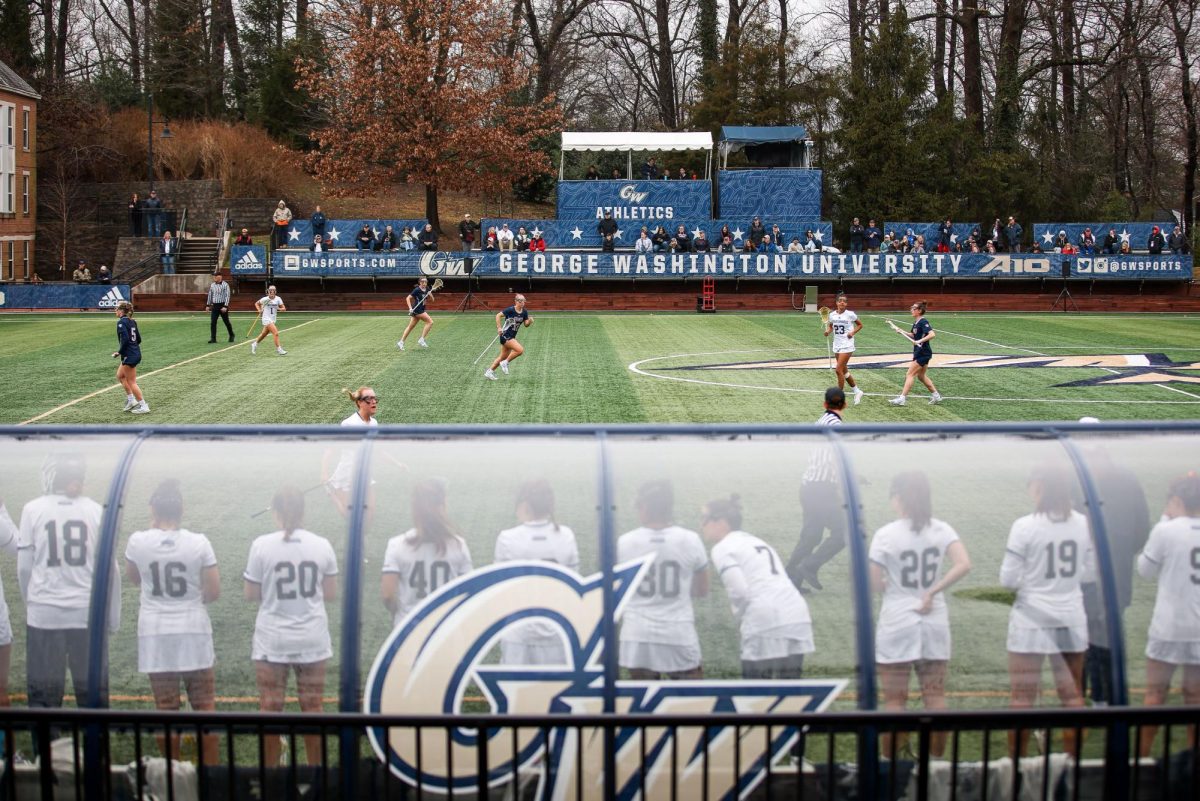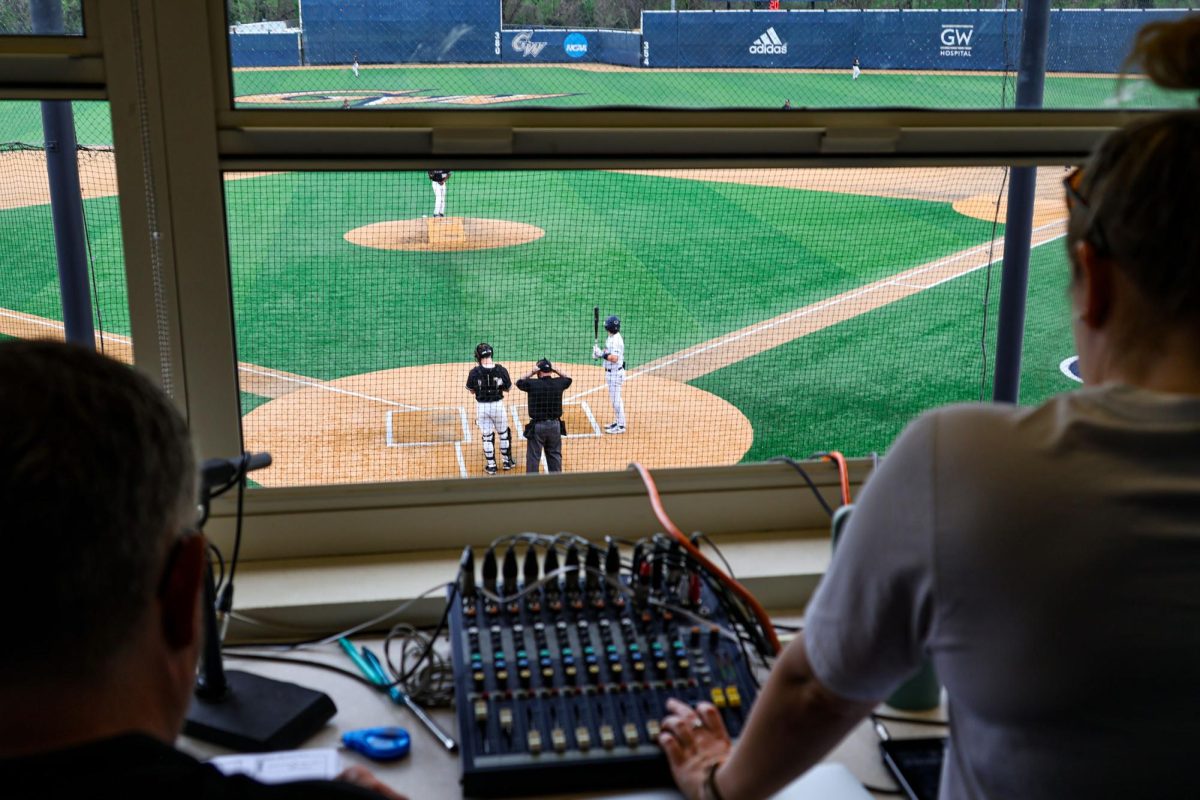Some of sports’ most memorable moments have been made by athletes playing through pain. Willis Reed with a torn thigh muscle, making his first two shots in Game Seven of the 1970 NBA Finals. Kirk Gibson with a bum leg, hitting the game-winning home run in Game One of the 1988 World Series. The list goes on.
But at GW, where championships are rarely on the line, winning seldom takes precedence over an athlete’s well being, GW women’s basketball coach Joe McKeown said.
“This is not a win-at-all-costs environment,” he said. “If a player is hurt, be it he or she, we’ve always been very cautious.”
If McKeown’s assessment of GW athletics is correct, then no one could have expected last month’s allegations of physical and mental abuse against head softball coach Shaunte’ Fremin. Players said Fremin forced them to play through serious injuries and intimidated them into avoiding treatment from the training staff. Fremin would not comment on specific allegations, but as a result of her players’ injuries, the University canceled the remainder of the softball season March 22.
A month after the season’s premature end, it is unclear whether athletic trainers could have done more to help quell the softball players’ injuries. In interviews this week, players, coaches and administrators praised the work of the athletic training staff, but the trainers themselves refused to comment or make any statement about their role on the softball team or in general.
“I feel we’re behind-the-scenes people, and we try not to attract attention to ourselves,” head trainer Chris Hennely said in a message. “So we prefer not to do interviews.”
McKeown said a trainer’s job is one of many roles and that a trainer must establish a solid relationship with athletes.
“(The trainer) has to earn (the players’) trust because in a training room, players say and do things they’d never say to a coach,” he said. “She has to be a psychiatrist, psychologist, best friend sometimes if they need to lean on her, and she has to earn their respect.”
Coaches said when an injury first occurs, it is the athlete’s responsibility to see a trainer to get an initial sense of its severity. If a trainer thinks it necessary, the athlete will visit Dr. Kenneth Fine, the director of sports medicine at GW. The final decision on any injury, GW Director of Athletics Jack Kvancz said, should be made by Dr. Fine.
But Kvancz also said a doctor’s diagnosis is not always indicative of how long an injury will sideline a particular athlete.
“Say we’ve got the same injury,” he said. “A sprained ankle is a good example because some guys are out forever, and other people … they might be playing. So the doctor makes the final say, but they’re going to ask the kid.”
Kvancz added that if a doctor says an injury will not get worse by continuing to play, the athlete might take the field.
When injuries take place mid-game, however, it’s not always easy to determine whether the athlete can go. Oftentimes the athlete’s input is key, and it can be hard to trust the athlete, head baseball coach Walter said.
“Players put a lot of pressure on themselves to play through pain,” he said. “And we talk a lot about being able to determine between injury and pain. But you have to be able to make a decision based on what’s best for the team, not just for tomorrow’s game, but for the long haul, for the whole season. Having them healthy in May is certainly a lot more important than April or March.”
While Kvancz and coaches specifically outlined the way injuries should be handled, softball players who did not want to be named said in March that the reality was quite different.
The weekend before allegations were made public in The Hatchet, team trainer Kent Hulnick told Fremin the team would have to forfeit three games at the GW Invitational due to excessive injuries, players said.
Players added that Fremin ignored the trainer’s advice and told the team, “The trainers are trying to get us to forfeit, and that’s not going to happen. You don’t forfeit your own tournament.”
Hulnick would not comment on the allegations.
Although not to the degree of the softball players, other athletes said they feel pressure to play through injuries.
As co-captain of the men’s tennis team, senior Matt Hane never had an injury keep him out for an extended period of time. But the Atlantic 10 player of the year said that as a top player, he feels pressure to play in almost any circumstance.
“I feel like I have a responsibility to go out there and play,” he said. “Because if I’m not, every other person on the team gets moved up one (spot) and has a tougher match because of it.”
When Walter played collegiate baseball at Georgetown, he never turned down the chance to play, even with an injury, he said. Now, as a coach, he said he learned that each athlete deals with injuries differently.
“I was the kind of player who would always play,” Walter said. “But there were players certainly that would tell the coach if they couldn’t go. And I think it’s you’re job as a coach to know your players and know which guys are going to downplay their injury and which guys are hypochondriacs.”
Kvancz said a coach and player may have input on the player’s status but was adamant that the final decision rests with the doctor.
“I think the coach’s influence is way overrated,” he said. “If you say to me as the trainer, ‘Johnny can’t play tonight’ but Johnny’s getting 25 points a ballgame, do you think (the coach) is going to be happy? … But in the end, the coach has no say … It’s as simple as that.”
For the most part, coaches didn’t agree with Kvancz, saying they feel responsible for their athletes.
“I think it ultimately rests on the coach,” Walter said. “The coach has to listen to the player, the coach has to listen to the trainer, and then the coach has to make a final decision based on what he thinks is best for the team in the long haul.”





